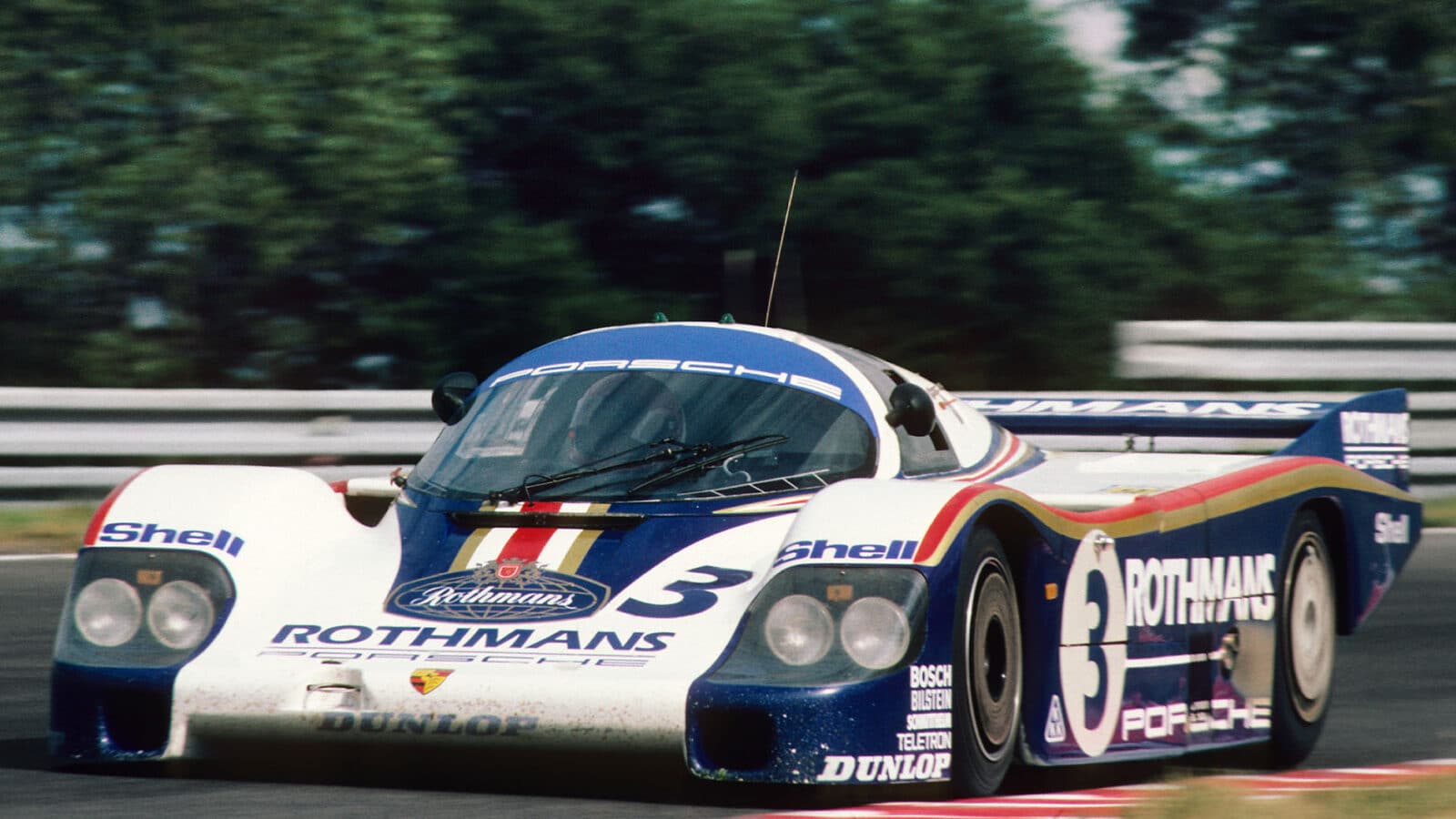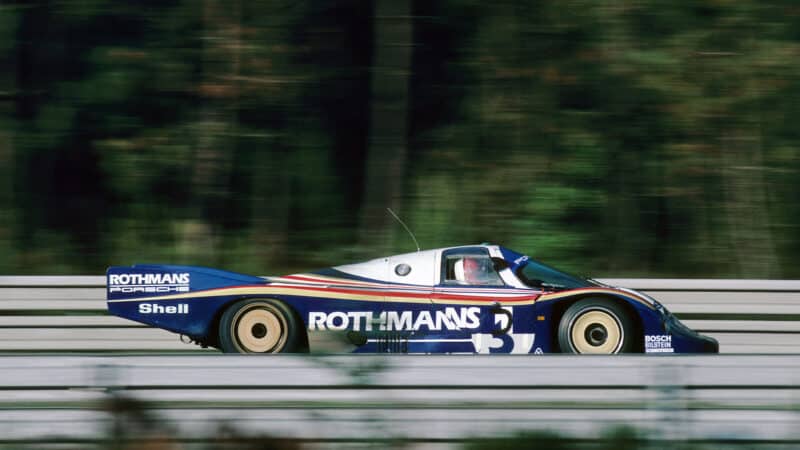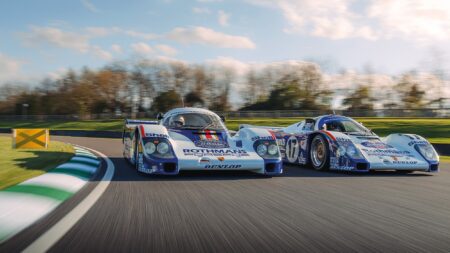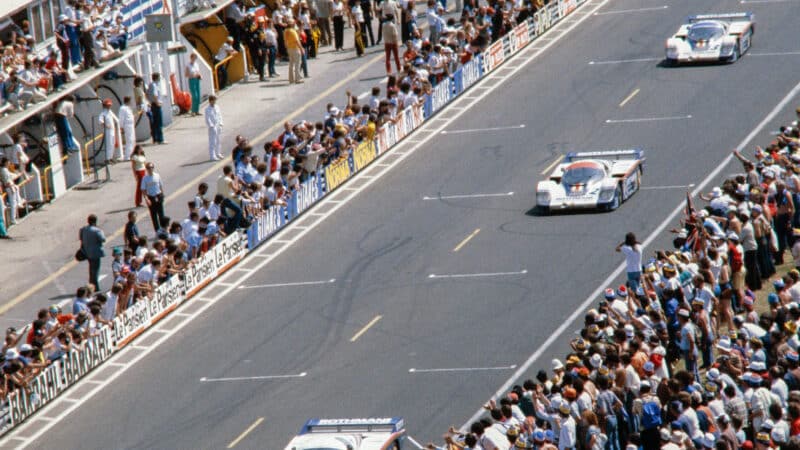“It seems the door hadn’t been closed properly,” remembers the 1977 Le Mans winner. “And then bang! It flew off down the Mulsanne Straight.”
A wheel-bearing failure scuppered any chance of a comeback, but the car moved back into the podium positions in the final hour. Barth was a clear third Porsche when he crossed the line, albeit 19 laps down on the winning 956 driven by Jacky Ickx and Bell.
Chassis 004 was on duty again when the world endurance championship resumed at Spa in September. The new Motronic electronic management system, which did away with mechanical fuel injection, was to be found on the flat-six engines of the two Porsche entries. Two months later, at the non-championship Kyalami event, 004 was the only car running Motronic, and Bell wasn’t happy.
“I always used to bitch that Jacky got all the new stuff first, but this time I had the latest kit,” recalls Bell, who was sharing with the Australian Vern Schuppan for the race. “There was a throttle lag problem with the Motronic, which wasn’t a too bad until it got dark. It was difficult to get on the power if you couldn’t see through the corner.

Suspect door is changed
DPPI
“Vern and I were well off the pace, so I went to Peter Falk [Porsche’s team manager] and said I didn’t want to run the system. Jacky piped up and said he would.”
The Motronic-equipped engine would go up in smoke, though, during practice soon after the swap, and Ickx and Mass would win with mechanical injection. “That was typical of Jacky Ickx,” says Bell. “He always came away smelling of roses.”






